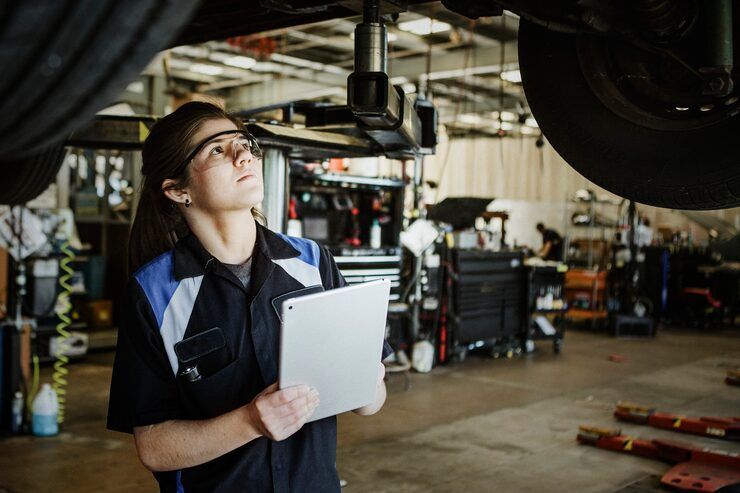Car repair services include maintenance and restoration of vehicles to be driven efficiently and safely. These services range from basic oil change and brake controls to complex engine diagnostics and transmission change.
The car repair is present because the vehicles, like all other machines, use over time. Parts appear or do not work when exposure to road conditions, weather and daily use. Regular maintenance helps prevent more serious problems and extend the car's life.
While many drivers depend on professional workshops, understanding the basics of helping car owners can make informed decisions, are better communicated with mechanics, and even simple maintenance tasks on their own.
Why Car Repair Services Are Important Today
Modern cars are made with a mixture of mechanical and electronic systems. As vehicles become more advanced, timely repair and diagnosis are important. Car repair services are required:
-
Safety: Missure brakes, tires or lights can increase the risk of accident.
-
Reliability: Regular maintenance reduces the possibility of sudden breakdown.
-
Cost savings: Early to fix small problems prevents more expensive repair.
-
Legal compliance: In many areas, the vehicle should be in good condition for road testing.
-
Environmental effects: A well -maintained car emits less environmental toxins and goes more efficiently.
Who Is Affected?
-
Car owner every day
-
Fleet Manager
-
RIDESHARE -DRIVER
-
Delivery and service companies
-
People who buy or sell used vehicles
Solves Problems:
-
An unexpected car problem
-
Long wear and tears
-
Expensive emergency repairs
-
Fuel retardation
-
Security Safety Problems
Regulations and Legal Car Repair Guidelines
Car repair services are affected by national and regional rules that ensure that the vehicles are safe for the road. Based on the country they may be involved:
These rules protect consumers, support small repair companies and ensure that vehicles meet safety and environmental standards.
Equipment and Resources for Basic Car Repair
Many tools and platforms can help both beginners and experienced car owners with repair and maintenance tasks:
DIY Diagnostic Tools:
-
OBD-II scanner (eg blues driver, fixd): plug into your car port to detect error code and performance problems.
-
Torque Pro App: An Android app that works with OBD readers for live data and diagnostics.
Repair Guidance and Platform:
-
Ifixit Car Repair Guide: Step-by-step manual for different models.
-
Tow Manual: Print and Digital Guide for DIY Repair.
-
YouTube channel: Popular channels like Chrisfix and Scotty Kilmer offer beginner-friendly training programs.
Service Tracking and Removes:
-
Mycarfax: App that tracks repair, maintenance and service history.
-
Autocyst: Vehicle maintenance log and storage of documents.
Online Estimate Equipment:
-
Repairpal: The zip code provides cost estimate for general repair.
-
Yourmechanic Estimate: Helps understand prices before going to a store.
These devices help car owners to be informed, reduce costs and make better decisions while working with mechanics or service centers.
Frequently Asked Questions
1. How many times should I serve my car?
Most cars require basic service every 6 months or 5,000-10,000 km (3000–6,000 MI), based on the use and manufacturer's guidelines. Check your instruction manual for shades.
2. What is the need to repair my car?
Common signals include strange noise, warn lights, difficulties in starting difficulties, liquid leaks, vibrations and fuel efficiency. Do not ignore unusual changes in performance.
3. Can I repair my car without a guarantee?
Basic functions such as oil change or air filter replacement are usually hardened, but major repairs can affect your warranty. The document is always processed and uses approved parts whenever possible.
4. What is the difference between maintenance and repair?
-
Maintenance is regular care such as oil change, tire rotation and inspection.
-
Repair is cured when something is damaged, worn or malfunction.
5. Are electric vehicles cheap to maintain?
In general, yes. EVs contain low moving parts, no oil change, and there are low wear products such as spark plugs. However, battery replacement or software updates can be expensive.
Final Thoughts
The repair of the car may seem complicated at the first time, but understanding the basics can make the ownership of the vehicle more manageable and cost -effective. Car owners can avoid major breakdowns and expand the lives of their vehicles, using available devices and resources to recognize signs of problems and use available equipment and resources.
Whether you handle yourself by repairing or going to a reliable mechanic, it is important to be informed. This guide provides you with a basis to help you navigate the car repair, self -assured and responsible with security and reliability as top priorities.